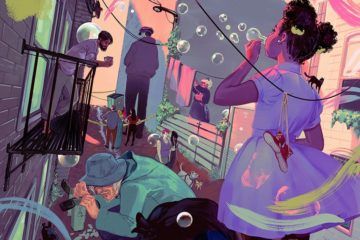Will Di Novi at Hazlitt:
 Ever since ancient Uruk, the world’s first major city, founded around 4000 BC in what is now Iraq, alleys have served as a borderland between private and public life. Uruk’s covered lanes, no more than eight feet wide, offered respite from the sun when residents walked to the temple, as well as a space to escape from tiny windowless homes. A place to meet and make mischief, tucked away from the plazas where power and privilege reigned, these were sites where urban ideals collided with human desire.
Ever since ancient Uruk, the world’s first major city, founded around 4000 BC in what is now Iraq, alleys have served as a borderland between private and public life. Uruk’s covered lanes, no more than eight feet wide, offered respite from the sun when residents walked to the temple, as well as a space to escape from tiny windowless homes. A place to meet and make mischief, tucked away from the plazas where power and privilege reigned, these were sites where urban ideals collided with human desire.
That would never change. Even as the back alley shifted form and function, inspiring local variants in every urban culture—the “castra” alleyways in Roman fortress towns, the hutongs of Beijing, the terraced lanes of Istanbul with howling packs of dogs—it stayed the city’s unofficial social laboratory. The lower and middle classes of early modern Seoul defied a rigid caste system in narrow Pimagol: “Avoid-Horse-Streets” where nobles couldn’t ride.
more here.
